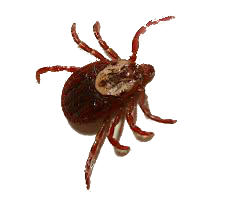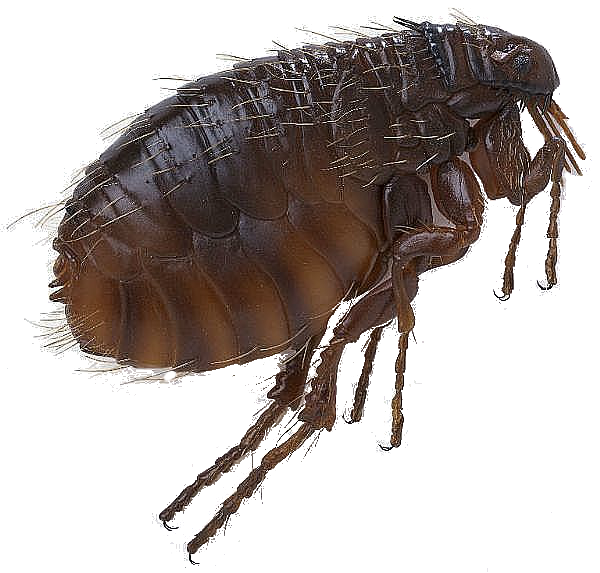 It is time to protect against ticks and fleas. I personally HATE the thought of putting those tick & flea treatments onto my dogs. The last time I used a spot-on treatment, one of my dogs began to tremble, salivate, vomited, and lost her physical coordination within only minutes of application. I bathed her to remove the product. This helped quite a bit and she calmed down. I have avoided these products ever since. People have no idea what these chemicals do to their dogs. Most vets dispense them like candy without providing any information to pet owners. Time is money and commissions are money. These vets know very well about how dangerous these pesticides are. They will sooner tell you how toxic they are for humans than explain the dangers they present to our pets. There is research that proves that these chemicals are hazardous. In fact, there are several reports submitted that document bad reactions to these spot-on treatments which prove their toxicity. Why have I used the term “pesticides” anyway? Isn’t that a harsh term? The EPA categorizes spot-on products as “pesticides.” The active ingredients in these products include amitraz, cyphenothrin, dinotefuron, etofenprox, fipronil, imidicloprid, metaflumizone, permethrin, pyriproxyfen and S-methoprene. Those pesticides are highly toxic. Furthermore, the inert or inactive ingredients are question
It is time to protect against ticks and fleas. I personally HATE the thought of putting those tick & flea treatments onto my dogs. The last time I used a spot-on treatment, one of my dogs began to tremble, salivate, vomited, and lost her physical coordination within only minutes of application. I bathed her to remove the product. This helped quite a bit and she calmed down. I have avoided these products ever since. People have no idea what these chemicals do to their dogs. Most vets dispense them like candy without providing any information to pet owners. Time is money and commissions are money. These vets know very well about how dangerous these pesticides are. They will sooner tell you how toxic they are for humans than explain the dangers they present to our pets. There is research that proves that these chemicals are hazardous. In fact, there are several reports submitted that document bad reactions to these spot-on treatments which prove their toxicity. Why have I used the term “pesticides” anyway? Isn’t that a harsh term? The EPA categorizes spot-on products as “pesticides.” The active ingredients in these products include amitraz, cyphenothrin, dinotefuron, etofenprox, fipronil, imidicloprid, metaflumizone, permethrin, pyriproxyfen and S-methoprene. Those pesticides are highly toxic. Furthermore, the inert or inactive ingredients are question able as they sometimes can contribute to the toxicity of these products. Fleas and ticks are becoming resistant to some of the chemicals in spot-on treatments so whether or not they work cannot be guaranteed. If there is a caution printed on the box stating or implying that it is toxic to humans (ex. avoid human contact with the liquid), then you should think twice about using it on your dog.
able as they sometimes can contribute to the toxicity of these products. Fleas and ticks are becoming resistant to some of the chemicals in spot-on treatments so whether or not they work cannot be guaranteed. If there is a caution printed on the box stating or implying that it is toxic to humans (ex. avoid human contact with the liquid), then you should think twice about using it on your dog.
The EPA has reports of the following reaction to spot-on tick & flea products:
vomiting
diarrhea
excessive salivation
lethargy
skin redness, sores, and ulcers
itching
hair loss
tremors
seizures
ataxia (lack of control of body movement and coordination)
nervousness
death
To read about healthier options, please continue to my blog article, Natural Flea & Tick Repellent
Comment
-
Comment by Scott Smith on May 12, 2014 at 12:42pm
-
Ticks have been especially bad this year, I've taken them off the dogs and one on myself.
-
Comment by Janie Lerner on May 2, 2014 at 6:54pm
-
The thing is that the pests are becoming immune to many of the pesticides. The best thing is to AVOID the pesticides and make it so that the bugs don't want to bother with the dogs in the first place as opposed to poisoning the bugs when they are already attracted to the dogs.
-
Comment by Geordie on May 2, 2014 at 5:35pm
-
The past two summers were such nightmares for bugs. I read all sorts of reports that no matter if you used natural products or pesticide ones, people's pets were getting fleas and ticks.
-
Comment by Janie Lerner on May 2, 2014 at 3:36pm
-
I like to use Filthy Animal Shampoo made by Kelco. It is strong, but it has no pesticides or harmful chemicals. It is supposed to be diluted. Just follow the instruction on the label. I am sure you could find it on Amazon. Just keep your fingers crossed!!!
-
Comment by Geordie on May 2, 2014 at 2:06pm
-
If you use natural flea/tick repellants, but your pup still gets fleas, what are the best ways to treat?
© 2025 Created by PetBrags Pet Lovers Paradise.
Powered by
![]()



You need to be a member of PetBrags Pet Lovers Paradise: Pet Community for All Pets to add comments!